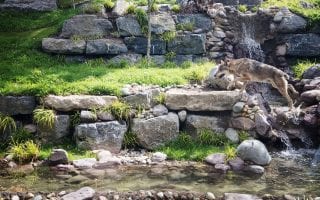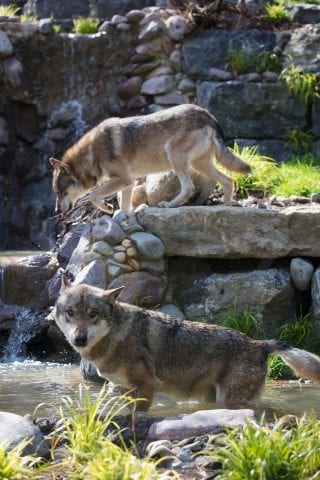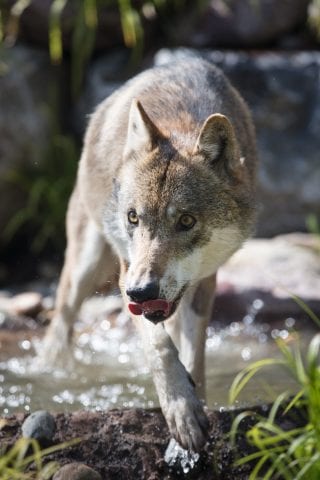Fun Facts
Howl for the hunt
The grey wolf howls to assemble the pack for hunting, to pass on an alarm or warning, to locate each other during a storm and to communicate across great distances. Wolf howls are generally indistinguishable from those of large dogs.
Slow to their senses
Pups are born in spring and are deaf and blind, and won't develop their senses for a further 9-12 days after birth
The last wolf in Ireland
Grey wolves used to live in the wild in Ireland but unfortunately they went extinct due to habitat loss of their native forests. The last grey wolf sighting in Ireland was recorded in 1786.



